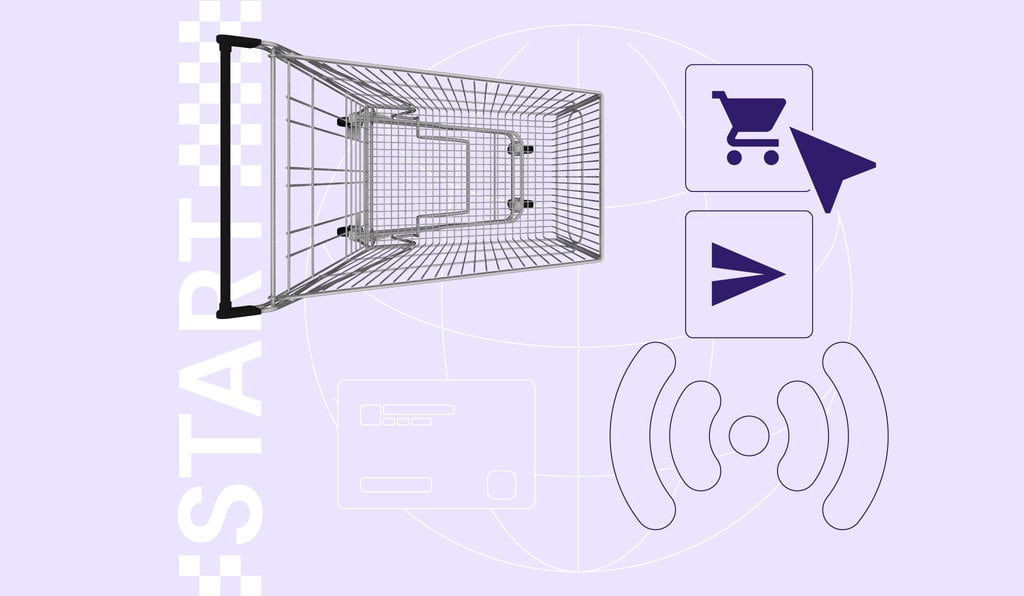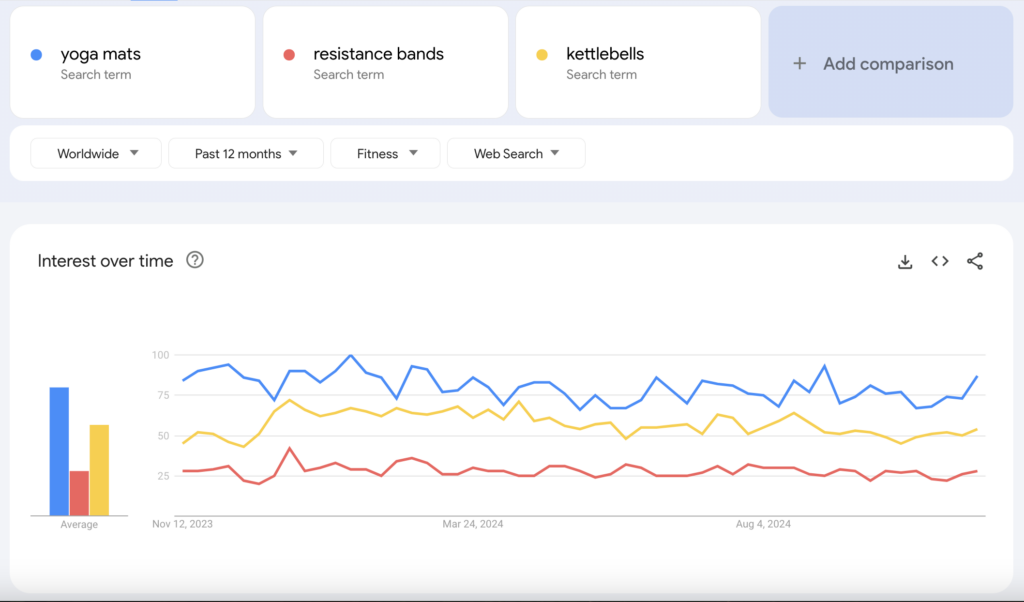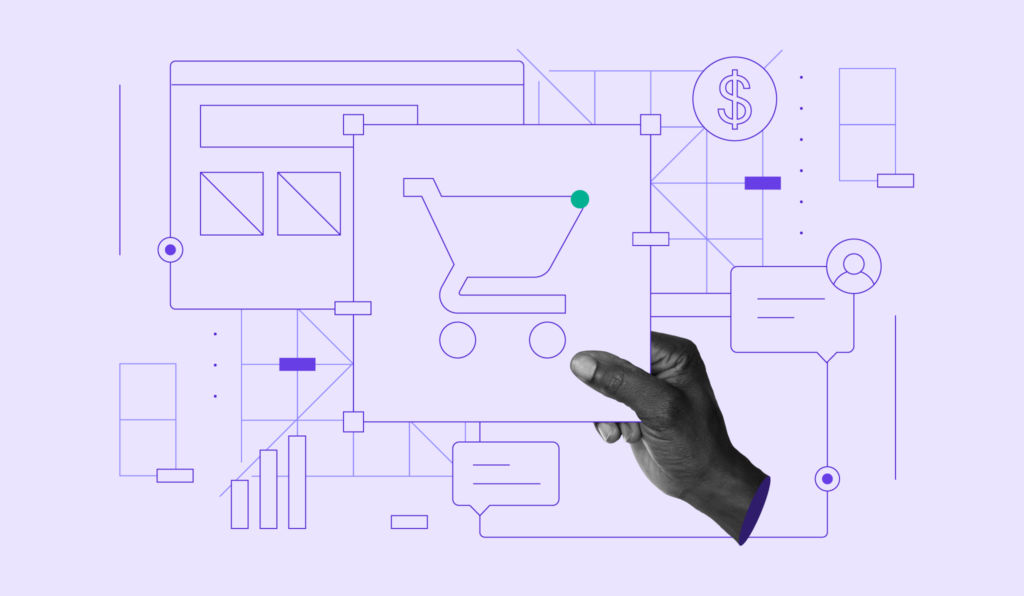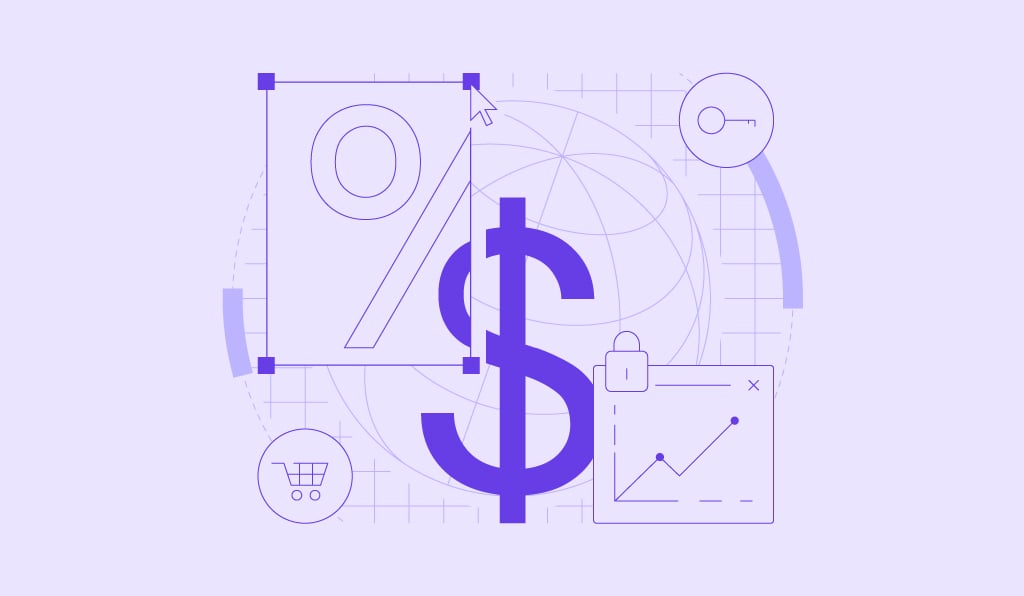How to start an online store in 7 steps

Creating an online store involves deciding what to sell, identifying your target audience, building your brand, registering your business, setting up your ecommerce store, marketing your products, and optimizing for growth. This comprehensive process transforms your business idea into a profitable online shop that will reach customers worldwide.
Building a successful online shop requires strategic planning across multiple areas, from initial product research and brand development to technical setup and ongoing optimization.
Each step plays an important role in establishing a strong foundation that supports long-term growth and profitability in the competitive digital marketplace.
1. Decide what to sell online
First, you must know what to sell, how profitable it is, and whether there’s a demand for it. Start by going through the list of what you want to sell and checking what’s trending. Focus on the most profitable things to sell that align with current market demands.
For me, using Google Trends was a game-changer. It’s free and super easy to use. Just go to the Explore page, add your product keyword, and compare it with a few others.
As an example, I compared three fitness equipment products to see which had a higher search interest.

The results show yoga mats have had the highest interest over the past 12 months, making them the ideal product to sell online.
Once you’ve picked your product, think about how to source it. I’ve seen three common methods work well:
- Making your own products. This is great for selling unique items and having full control over quality.
- Reselling products. Buying from suppliers and selling at a markup gives you variety and flexibility.
- Dropshipping. This low-risk option doesn’t require you to hold inventory because your supplier ships directly to your customers.
With your products and sourcing set, it’s time to price them effectively. Make sure to evaluate your costs and determine your desired profit. For a complete guide on setting the right price, check out our tips on pricing a product.
2. Figure out who your target audience is
Knowing who will buy your product makes planning easier, from deciding where to advertise and what to say, to designing your ecommerce store. Instead of trying to appeal to everyone, focus on the people who will be most interested in your product.
Start by creating a buyer persona. This is a simple profile of your ideal customer that answers questions like:
- How old are they?
- Where do they live?
- What are they interested in?
- What problems does your product solve for them?
For example, if you’re selling reusable water bottles, your target audience might be people who care about fitness and sustainability. They’re likely in their 20s or 30s, live in urban areas, and follow eco-friendly trends on social media. Here are the ways to find them:
- Search social media hashtags related to your product, like #ecoliving or #hydrationgoals, to see who’s posting and engaging.
- Join online communities like Reddit or Facebook groups that match your niche and observe what people discuss.
- Look at competitors’ followers on platforms like Instagram to see who’s already interested in similar products.
Once you’ve defined your buyer persona and figured out where to find them, let that guide all your decisions. Knowing your audience makes it easier to connect with them and grow your business.
3. Build your brand
Building a brand from scratch is an exciting process that forms the foundation of your ecommerce store’s identity.
Start by defining your brand values, which are the foundation of everything, including your name, visuals, and messaging. Ask yourself:
- What does my business stand for?
- What do I want customers to feel when they interact with my brand?
- How do my products reflect those values?
Next, choose a business name that sets the tone for your brand. Think about your product benefits and target audience. For example, if you sell eco-friendly candles, names like Pure Earth Candle Co. or Forest & Wick might work. Check if the domain is available (yourbusinessname.com) since a matching domain makes it easier for customers to find you online.
Finally, create your brand identity with colors, fonts, and a logo that reflects your values. Keep your logo simple yet memorable using tools like Canva. Choose 2-3 colors that represent your brand’s personality, such as greens for eco-friendliness or bold reds for energy, and pick fonts that are professionally designed and easy to read.
When you successfully build a brand for your store, it helps differentiate your online shop from competitors and creates lasting customer connections.
4. Choose a business structure and register your business
Getting your business structure and registration sorted early is important. It gives your ecommerce store a solid legal and tax foundation and prevents headaches later. Don’t worry, it’s simpler than it sounds.
First, decide on a business structure. The most popular options for beginners are sole proprietorship or limited liability company (LLC). The former is the simplest for small-scale ventures, while the latter is better for larger businesses.
For long-term success, I recommend going with LLC from the beginning. It’s more secure and scalable, so you won’t have to worry about switching structures later.
Plus, an LLC protects your personal assets. If there are any legal issues or debt, the LLC’s creditors can only go after the company’s assets, not your personal car, home, or bank account.
The next step is registering your business. Here’s a simple checklist to guide you if you’re based in the U.S.:
- Confirm the business name. Make sure it’s available for registration and as a domain name. A matching domain boosts your brand’s professionalism and makes your store easier to find online.
- Register a business address. Use your home address or a dedicated business address, as some platforms may require it for verification.
- Submit business documents. For an LLC, file documents like the Articles of Organization with your state’s business office. Sole proprietorships usually have fewer requirements.
- Get a tax ID or an Employee Identification Number (EIN). An EIN is like a social security number for your business. You need it to open a business bank account and manage taxes.
- Check for licenses and permits. Some businesses need special licenses to operate legally, like health department permits or reseller’s licenses.
- Open a business bank account. Setting up a separate account helps organize your finances. Avoid mixing personal and business expenses – it’ll make tracking much simpler.
If you’re outside the U.S., double-check your local legal requirements to register your online store. For example, in Canada, you need a business number and GST/HST account to sell goods or services online.
5. Build your online store
Building your ecommerce store requires several key components that work together to create a seamless shopping experience for your customers.
First, you have to pick an ecommerce platform that makes setup easy and ensures your store can grow with you. Look for platforms with comprehensive store management capabilities, multiple payment gateway options, and built-in SEO features. When making your choice, consider factors like transaction fees, customization options, and available integrations.
Once you’ve selected your platform, create your online shop by setting up the basic structure and design. Add your products with detailed descriptions, high-quality images, and proper categorization to help customers find what they need. Configure your payment gateways to accept various payment methods, including credit cards, PayPal, and region-specific options your target audience prefers.
Complete the setup by updating your company information for professional invoices, configuring shipping zones and rates based on your delivery areas, and setting up your checkout process with necessary legal pages like terms and conditions. Make sure to test everything thoroughly before going live to ensure smooth customer transactions.
These essential steps to build an online store will help you form the foundation of a successful ecommerce business.
6. Start marketing your online store
Now that your ecommerce store is set up, it’s time to promote it! Marketing helps you reach potential customers and keep them returning.
Start by creating social media profiles. About 82% of consumers use social media for product discovery and research, which can help increase awareness of your online shop.
TikTok is becoming more popular, with 54% of business owners promoting their brands there. I asked Charlotte Ang of TrafficBees why TikTok can be one of your most effective marketing channels and what you should consider when creating content for the platform.
Expert tip
TikTok’s audience goes onto the platform for two main reasons: to learn and to be entertained. As a brand, go in with the mentality that TikTok is for storytelling and creating awareness. If you’re selling a tennis racket, talk about tennis tips, how to improve your game, how you started your shop, or how tennis rackets are made.
Engaging on social media also helps build your community. A loyal community creates word-of-mouth marketing and keeps your customers engaged.
Expert tip
At Whole Food Earth, building a community around our brand has been crucial as we engage with customers through social platforms, sharing recipes, tips, and information about the benefits of natural foods.
Another strategy I love is offering a launch discount. Discounts create excitement and give customers a reason to shop immediately. With Hostinger’s ecommerce website builder, you can set discount codes on the Store manager page.
Don’t be afraid to try different strategies and learn what works best for your audience. Learn more about ecommerce marketing.
7. Optimize for growth and performance
Continuous improvement is key to keeping your business competitive and your customers happy. Optimizing your online shop ensures it performs well, adapts to customer needs, and stays fresh over time.
First, collect customer feedback. Listen to what customers say about their experience and adjust based on their suggestions. I learned from Ben Read of Mercha how feedback can help increase customer satisfaction.
Expert tip
We learned valuable lessons when early customer feedback pointed out lapses in our communication process. Her feedback led us to tighten our follow-up processes and highlighted the need to balance our high-tech, high-touch approach to maintain customer satisfaction.
Second, analyze website analytics. Connect Google Analytics to your website and start measuring important metrics. This includes page views, click-through rates (CTR), and conversion rates to see which areas of your website are performing well and which need improvement.
Third, regularly update your website and product section to reflect the latest trends and customer preferences. For example:
- Add new products or seasonal items to keep your inventory interesting.
- Refresh product photos with high-quality visuals that resonate with your target audience.
- Update your website banners or homepage to reflect promotions or trending items.
By tweaking things based on feedback and keeping up with trends, you’ll keep your customers interested and set yourself up for steady growth over time.
Pro tip
When you make changes, always remember to update the website so you can view your latest changes live.
What are the most common mistakes when building an ecommerce store?
One of the biggest mistakes is selecting and pricing products without proper market research. Many new store owners choose products based on personal preferences rather than market demand, or they set prices without analyzing competitors and profit margins. This can lead to poor sales and unsustainable business models.
Choosing the wrong ecommerce platform is another critical error. Some platforms may seem appealing initially, but lack essential features like proper SEO tools, payment gateway integrations, or scalability options. This can limit your ecommerce store’s growth potential and require costly platform migrations later.
Overlooking user experience creates significant barriers to sales. This includes having a complicated checkout process, poor website navigation, slow loading times, or a poorly optimized mobile design. When customers can’t easily find products or complete purchases, they’ll abandon your online store for competitors.
Finally, many store owners fail to start marketing immediately after launch. They assume customers will automatically find their store, but without proper promotion through social media, search engines, or other channels, even the best products won’t sell. Successful online stores begin marketing efforts right from day one to build awareness and drive traffic.
What is the easiest platform to build an online store?
Several platforms make building an online shop straightforward, each with different strengths depending on your needs and technical experience. The most popular options include Shopify, WooCommerce, Wix, and Hostinger Website Builder.
Shopify is widely known for its user-friendly interface and comprehensive ecommerce features, making it a good choice for beginners who want everything built in. WooCommerce offers flexibility for those comfortable with WordPress, while Wix provides drag-and-drop simplicity with decent ecommerce capabilities.
When comparing these platforms, consider factors like ease of setup, customization options, transaction fees, and scalability. Some platforms charge monthly fees plus transaction costs, while others offer more transparent pricing structures. The best ecommerce platform depends on your specific business needs, budget, and technical comfort level.
Hostinger stands out as the platform that offers the most possibilities for all types of professionals. Whether you’re a complete beginner or an experienced developer, Hostinger provides the flexibility and tools needed to create a successful online shop without the complexity or high costs associated with other platforms.
Is Hostinger good for creating an online store?
Hostinger provides a range of tools to help you build your ecommerce store, catering to various skill levels and business needs.
With Hostinger Reach, you can build your email marketing lists and create professional newsletters to promote your products and connect with customers, which is essential for any successful online shop. Just describe your idea and let AI generate a ready-to-send email for you in seconds.
The Hostinger Website Builder provides a comprehensive ecommerce solution with drag-and-drop functionality, AI-powered tools, and built-in SEO features that support e-commerce functionality. It’s designed for users who want professional results without technical complexity, including integrated payment processing and inventory management.
For those who prefer WordPress, Hostinger’s managed hosting for WordPress integrates seamlessly with WooCommerce, giving you access to thousands of plugins and themes while maintaining excellent performance.
You can also explore Hostinger Horizons, an AI-powered no-code web app builder that lets you create custom web applications and websites in minutes without any coding required. You can even pick from a variety of ready-made ecommerce templates to launch your project quickly.
This comprehensive ecosystem makes Hostinger a versatile choice for building and scaling your online business.

Are online stores profitable?
The profitability of online stores depends on several factors, but the data shows encouraging trends for ecommerce businesses. Global ecommerce sales continue to grow year over year, with millions of entrepreneurs successfully building profitable online shops across various industries.
Several statistics highlight the potential of ecommerce businesses. By 2027, ecommerce is forecast to make up 22.6% of total retail sales worldwide. Additionally, the global reach of online stores allows businesses to tap into markets that would be impossible to access through physical locations alone.
Success factors for profitable online stores include choosing the right products with good demand and reasonable competition, implementing effective marketing strategies from day one, optimizing conversion rates through user-friendly design, and maintaining excellent customer service.
Many successful store owners also focus on building email lists and creating repeat customers, which significantly improves long-term profitability.
The key is understanding that building a profitable ecommerce store takes time, effort, and smart decision-making, but the potential rewards make it an attractive business opportunity. For comprehensive insights into market trends and growth opportunities, explore the latest ecommerce statistics to help inform your business strategy and take the first step toward building your successful online shop.
All of the tutorial content on this website is subject to Hostinger's rigorous editorial standards and values.







Comments
June 11 2020
Excellent post. The first-ever blog read on Hostinger and found it useful. Nice work Thanks.
October 11 2021
Great you are ....
October 12 2021
Happy to hear we helped!